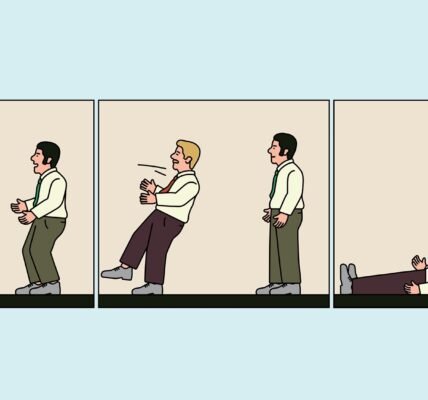Featured image by fizkes
Multimedia resource integration has become a game-changer in the dynamic world of education and professional development. Particularly, animated training videos have significantly improved how we learn.
This appealing style blends educational material with visual storytelling to deliver knowledge that is both compelling and interesting.
What distinguishes animated videos?
How do they affect our capacity for knowledge acquisition and application?
This blog examines the powerful influence animated training videos have on learning outcomes, focusing on the ways they improve understanding, retention, and the practical application of knowledge.
Scroll down below to learn more about this cutting-edge teaching tool.
RELATED ARTICLE: THE DIFFERENT TYPES OF TRAINING EMPLOYEES NEED
The Visual Advantage of Animated Training Videos
Through the use of animation, training videos have a distinct advantage.
Understandable Visuals: Complicated concepts are easier for viewers to understand when they can see them condensed into simple, understandable visuals.
Contextual Cues: Contextual cues from visuals help make abstract information more concrete. Additionally, animations can provide step-by-step explanations of processes and procedures, improving procedural comprehension.
This visual framework promotes active brain processing, which results in better understanding and enhanced memory.
Basically, animated training videos bridge the gap between theory and practice with dynamic images, enabling a richer, more in-depth learning experience.
Captivating Viewers’ Attention
The capacity of animated training films to hold viewers’ attention is one of their most notable features.
The engaging nature of animated images and storytelling tactics draws viewers in.
Learners are more likely to stay focused and remember what they have learned. This increased interest helps with early understanding but is also crucial for retention.
Animated videos produce unforgettable experiences thanks to the rich imagery and gripping stories. Learners are more likely to remember and apply the information they acquire from these videos. This makes animation an especially effective tool for raising long-term retention rates.
Catering to Diverse Learning Styles
Animated training movies are an adaptable instructional tool that may accommodate a variety of learning methods. For example:
1. Visual Learners: The dynamic graphics and animations that clarify difficult ideas are helpful to visual learners.
2. Auditory Learners: The accompanying narration and sound effects that emphasize central themes are helpful to auditory learners.
3. Kinesthetic Learners: The combination of visual and audio components produces a multimodal experience. This appeals to kinesthetic learners who prefer hands-on activities.
This versatility ensures that students with various learning styles and aptitudes interact with the material successfully, thus promoting a more diverse and inclusive learning environment.
In this way, animated videos act as a bridge to connect and resonate with a wide audience.
Interactivity: Theory and Practices in Animated Training Videos
Interactive aspects in animated training videos take learning beyond rote memorization.
This is because simulators, situations, and quizzes that promote participation are available to viewers. This practical method enables students to apply academic knowledge in real-world situations, thus strengthening their comprehension.
Learners develop a sense of agency and control over their learning experience by making decisions within the video. In addition to reinforcing important ideas, this interaction encourages critical thinking and problem-solving abilities.
It also successfully fills the gap between academic understanding and practical application, offering people a variety of educational and professional settings in a dynamic and productive learning environment.
Cost-Effectiveness and Scalability of Animated Training Videos
An affordable option for educational and training programs is animation in training videos. This because they don’t require further costs after the initial creation. Moreover, they can be utilized repeatedly.
This contradicts conventional approaches, which can call for pricey supplies or specialized teachers. What’s more, animated videos can be readily scaled to reach a big audience anywhere in the world.
They can be delivered digitally, making them available to students all over the world. Animated training is a scalable and affordable choice for businesses looking to offer high-quality training. This scalability means that instructional content can be distributed in an effective manner.
RELATED ARTICLE: HOW EMPLOYEE TRAINING INFLUENCES CORPORATE CULTURE
Evolving Animation Technology
Animation in training videos is sure to see significant technological improvements in the future.
Moreover, experts expect that VR and AR will deliver immersive learning experiences and play a revolutionary role. With the help of these technologies, learners can receive practical instruction in virtual environments that mimic real-world scenarios.
Also, we can expect to see the creation of more dynamic and realistic visual presentations thanks to improvements in animation software and methods.
RELATED ARTICLE: GETTING RESULTS: WHY ONLINE LEARNING WORKS ACROSS MULTIPLE INDUSTRIES



